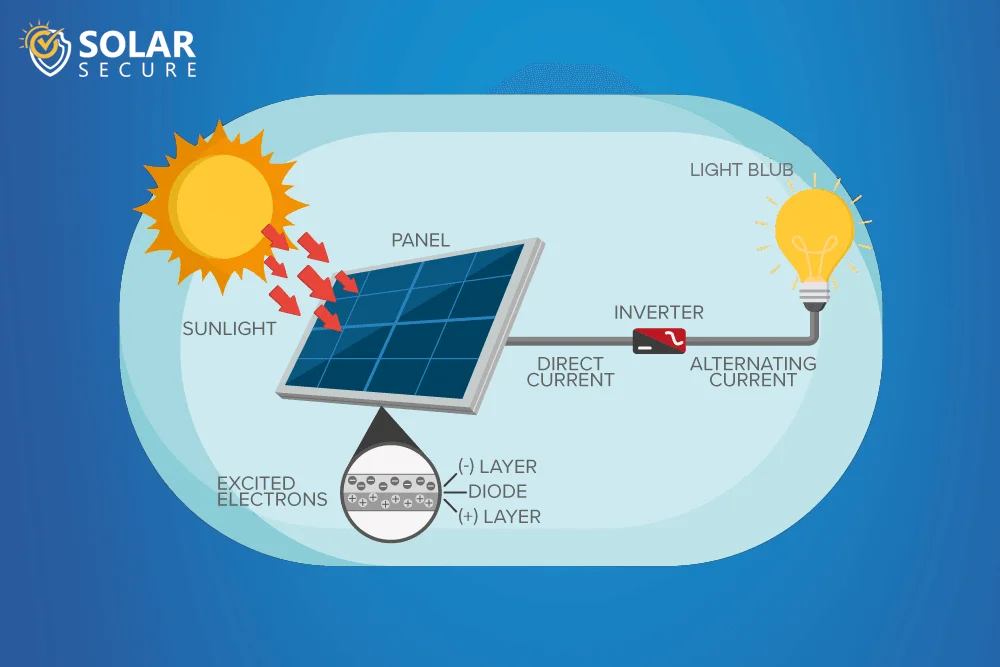In an era of increasing environmental concerns and the pursuit of renewable energy sources, solar power has emerged as a frontrunner in the race for sustainable electricity generation. Solar panels, also known as photovoltaic (PV) panels, harness the power of the sun and convert it into usable electricity. Understanding the science behind solar energy is crucial to grasp the immense potential it holds for a greener future. Here we will explore the fundamental workings of solar panels and shed light on the technology that enables them to capture and convert sunlight into clean energy.
-
The Basic Principle of Solar Panels
Solar panels are constructed using photovoltaic cells, which are made up of semiconductor materials, typically silicon. When sunlight strikes these cells, it initiates a process called the photovoltaic effect. The photons in sunlight excite the electrons within the semiconductor, creating an electric current.
-
The Photovoltaic Effect:
The photovoltaic effect is the heart of solar energy conversion. It occurs within the photovoltaic cells due to the unique properties of the semiconductor materials they contain. Silicon has atomic properties that allow it to form a crystalline structure capable of generating an electric field.
-
Structure of a Solar Panel:
A typical solar panel comprises several individual photovoltaic cells interconnected to form a module. These cells are layered between a top protective glass cover and a bottom backing material. The glass cover allows sunlight to pass through while protecting the fragile cells, and the backing material provides mechanical support and electrical insulation.
-
The Role of Silicon in Solar Panels:
Silicon is a critical component of solar panels due to its semiconductor properties. It contains impurities to create the necessary electrical characteristics. Most commonly, the silicon used in solar panels is doped with phosphorus and boron to create an N-type and P-type layer, respectively. The N-type layer has excess electrons, while the P-type layer has an abundance of electron holes.
-
The Flow of Electrons:
When sunlight strikes the solar panel, photons with enough energy dislodge electrons from their atoms within the semiconductor material. The electric field between the N-type and P-type layers pushes these free electrons towards an external circuit. This flow of electrons constitutes an electric current.
-
Energy Conversion and Electrical Output:
The solar panel's electrical current is direct current (DC), but most residential and commercial applications require alternating current (AC). An inverter is used to convert the DC electricity into AC electricity suitable for powering homes and businesses. The AC electricity can then be utilized for various applications or fed back into the grid.
-
Efficiency and Factors Affecting Performance:
The efficiency of a solar panel refers to the amount of sunlight it can convert into usable electricity. Several factors affect a solar panel's efficiency, including the quality of the semiconductor material, the intensity and angle of sunlight, temperature, shading, and so on. Ongoing research and technological advancements are continually improving the efficiency of solar panels.
-
Applications and Benefits of Solar Energy:
Solar energy has a wide range of applications, from residential rooftops to large-scale solar farms. Its benefits include reducing greenhouse gas emissions, lowering reliance on fossil fuels, generating electricity in remote locations, and providing long-term cost savings.
Conclusion:
Solar panels are revolutionizing the way we generate electricity, offering a clean and renewable energy source that can power our homes, businesses, and communities. By harnessing the power of the sun through the photovoltaic effect, solar panels are transforming sunlight into usable electricity. Understanding the science behind solar energy is crucial for appreciating its potential and making informed choices as we strive for a sustainable future. With ongoing advancements, solar power is set to play a vital role in shaping our energy landscape.





